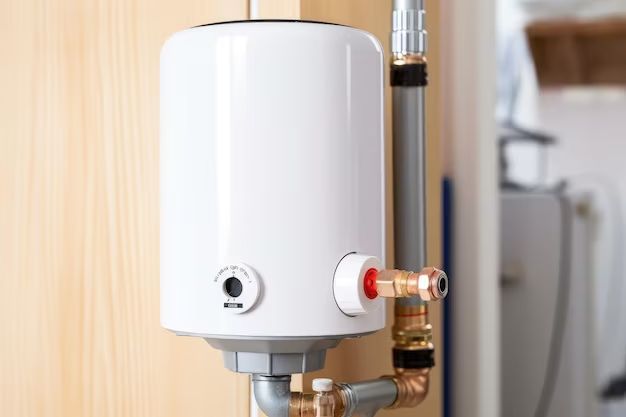Tankless water heaters, also known as on-demand or instantaneous water heaters, have become increasingly popular in recent years as an alternative to traditional storage tank water heaters. As the name suggests, tankless water heaters heat water directly without the use of a storage tank. When a hot water tap is turned on, cold water travels through a heat exchanger where it is instantly heated before coming out of the faucet. This ability to provide a continuous flow of hot water on demand is the main advantage of tankless water heaters over conventional storage tank models.
However, despite their benefits, tankless water heaters also come with some disadvantages that are important to consider before installing one in your home.
Page Contents
Higher Upfront Cost
One of the biggest downsides of tankless water heaters is their high initial cost. Purchasing a tankless unit can cost anywhere from 2 to 4 times more than a traditional storage tank heater. Installation costs are also greater because tankless heaters require upgraded electrical wiring and gas lines to handle their higher energy demands. The total installed cost of a new tankless system will typically range from $2,000 to $4,000 compared to only $500 to $1500 for a new storage tank unit and installation. The higher upfront investment for a tankless heater may take several years to recoup in energy savings.
Higher Operating Costs
Despite being more energy efficient than storage tank models, tankless water heaters can still have higher operating costs in some situations:
- Homes that use hot water intermittently – The burner has to fire up each time hot water is used. Frequent heating cycles can lead to more energy consumption than a storage tank where hot water is already stored.
- Homes with hard water – Scale buildup in the heat exchanger causes tankless heaters to work harder heating the water, using more energy.
- Colder climates – Tankless heaters require more energy to heat cold inlet water to the target temperature.
- Large families – Supporting simultaneous hot water demands to multiple fixtures may require a larger and more energy intensive tankless unit.
Limitations on Hot Water Availability
While tankless heaters provide an endless supply of hot water in theory, there are some limitations:
- Flow rate – Most tankless heaters can only heat water up to a certain flow rate, typically between 3-5 gallons per minute. Exceeding this can cause the water temperature to drop. Large homes with high demand may require multiple tankless units.
- Temperature rise – Tankless heaters have a maximum temperature rise they can achieve between inlet and outlet water. Larger temperature increases require a more powerful, expensive unit.
- Cold water sandwich effect – When using hot water, cold water in the pipes mixes with the heated water, resulting in a momentary temperature dip.
Maintenance Requirements
To maintain efficiency and avoid premature failure, tankless water heaters require more regular maintenance than conventional water heaters:
- Annual flare inspection – The burner needs to be checked for proper operation and signs of damage that can reduce efficiency.
- Regular descaling – Hard water deposits accumulate faster in a tankless heat exchanger and need to be periodically flushed to restore heat transfer.
- Annual filter replacement – Particle filters need replacement to prevent clogging that can inhibit water flow.
Neglecting necessary maintenance could lead to expensive repairs or replacement costs down the road.
Size and Space Requirements
Tankless water heaters are more compact than traditional tank heaters but have some additional space considerations:
- Venting – Most tankless heaters require stainless steel concentric venting, which may be difficult to install in cramped utility spaces.
- Condensate drain – A drain is needed to capture acidic condensate produced when highly efficient tankless heaters exhaust flue gases.
- Clearances – Adequate clearance is required around the unit for proper operation and servicing access.
Longer Wait Times for Hot Water
One downside of on-demand heaters compared to storage tank models is that there is no reserve of pre-heated water. This translates to longer wait times for hot water at fixtures farther from the heater anytime the unit has been inactive for a while. The length of the delay depends on:
- Distance from the heater
- Pipe diameter
- Ground water temperature
Delays can range from 10 seconds to over a minute in some cases, resulting in wasted water as the user waits for hot water to reach the faucet.
Safety Risks
Tankless water heaters pose some potential safety hazards if not properly installed and maintained:
- Gas leaks – Gas piping issues can lead to dangerous gas leaks. A gas detector is recommended.
- Scalding – Malfunctioning thermostats can allow unsafe outlet water temperatures over 125°F.
- Freezing – Tankless heat exchangers can rupture if pipes freeze in cold weather.
Conclusion
In summary, the primary disadvantages of tankless water heaters compared to conventional storage tank models include:
- Higher upfront costs
- Potential for higher operating costs
- Limitations on hot water availability
- Increased maintenance requirements
- More complex installation
- Longer wait times for hot water
- Safety risks if improperly installed/maintained
Weighing these factors against the advantages of tankless heaters in terms of energy efficiency, space savings, and endless hot water will help homeowners make the best choice for their needs and budget.
Consult a qualified plumbing professional for advice on selecting the right water heater. With proper sizing, installation, and maintenance, tankless heaters can be an effective solution for many homes despite their drawbacks compared to traditional models.
